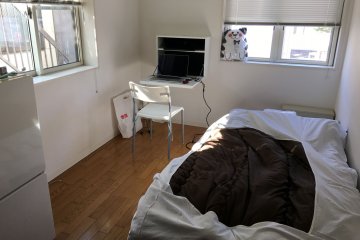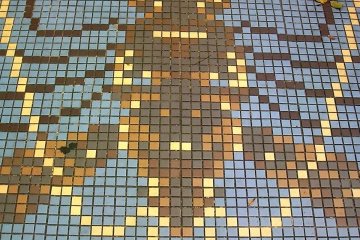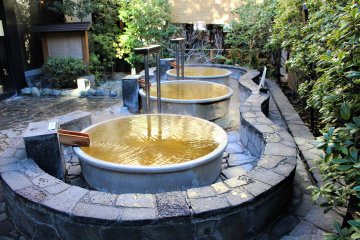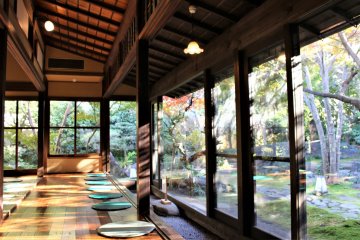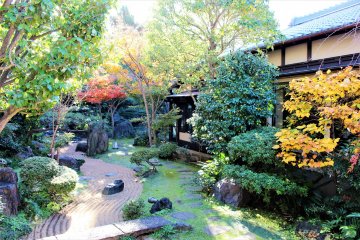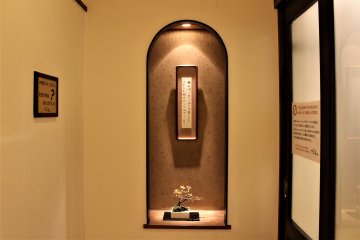If you travel by train from Tokyo to a hot spring resort and stay in a Japanese traditional inn, it usually costs at least JPY 20,000. Even if you don’t have enough time and money to do so, you don’t have to give up experiencing genuine hot spring bathing in a Japanese traditional atmosphere. You can, instead, visit the spa facility Maenohara Onsen Saya-no-Yudokoro in Itabashi Ward in Tokyo.
100% natural hot spring water
First opened in 2005 and renovated in 2015, Maenohara Onsen Saya-no-Yudokoro is the only spa facility in Tokyo’s 23 wards that provides 100% natural hot spring water coming directly from the source without any filtration or additives. This is very rare in Tokyo, as it takes a great deal of effort to maintain baths that use such water. In fact, quite a few spa facilities, even in hot spring resorts, add water from a tap into their baths and use circulated water.

Despite the rarity, many people, even Tokyoites, don’t know about Saya-no-Yudokoro. This is probably because the facility rarely appears in major guidebooks as it is located in a purely residential area with no major tourist destinations or fancy restaurants nearby. This means that it is not too touristy, although it gives visitors a lot of fun and many of them spend hours there. Let’s take a look at what it has.
Baths
Saya-no-Yudokoro has different types of outdoor and indoor baths, including pot-shaped baths (tsubo-yu 壺湯) and “lie-down” baths (ne-yu 寝湯). It is so good to lie down in water with the perfect temperature that you may find yourself dozing off without realizing it.

Saunas
Saya-no-Yudokoro has both steam and dry saunas. In the bedrock sauna area, there are four types of rooms that differ according to temperature. The mercury of the “summer” room is around 50°C while the “autumn” room is about 40. Visitors can cool down in the “winter” room and take a rest and a nap in the “spring” room.

Restaurant and Japanese garden
The restaurant Shitensha offers soba noodles made from 100 percent Japanese buckwheat flour, rice bowls topped with fresh raw fish (sashimi), tempura, and so forth.

The restaurant also offers a scenic view of a beautiful Japanese garden that is neatly arranged in an authentic way. The garden depicts a treasure-hunting story, having a boat-shaped stone, a rock resembling a sacred mystical mountain, and gravel and sand representing a river.

The garden looks different in each season and visitors can enjoy cherry-blossoms and other flowers in spring and colored leaves in autumn.

Relaxation therapies
Saya-no-Yudokoro provides a range of relaxation therapies, including reflexology, aromatherapy, Korean body scrubs, and facial massages.
Real hot spring experience in Tokyo for JPY 1,000
Saya-no-Yudokoro offers this real hot spring experience for around JPY 1,000 (JPY 890 on weekdays and JPY 1,120 on weekends and holidays). Ordinary sento public baths are around half the price while other major spa centers charge at least twice as much. “Making profit is not at the center of our interest. We just want people to enjoy a hot spring more often and casually,” said the bathhouse manager Takao Yoshioka.
The history of the facility suggests that what the manager says is really true. On the land where the Saya-no-Yudokoro is currently built, used to sit the house of a Japanese entrepreneur who started a metal materials company in the 1940s. After the company’s headquarters and its factory were relocated, the house was renovated into a bathhouse for the locals. Saya-no-Yudokoro is operated by the metal materials company and the Japanese garden and part of the building originated from the founder’s house.

The founder loved Japanese culture and was also a haiku poet. His haiku works, as well as bonsai potted plants and ikebana flower arrangements, can be seen here and there inside the facility.

A local woman who joined me and others in a dip said she doesn’t need to bother to travel a long distance with a heavy bag to enjoy hot spring. “I sometimes find bathwater in a famous hot spring resort is not so good as that of Saya-no-Yudokoro. This place is definitely one of my favorites,” she said.
* Please note that using the bedrock sauna area and massage services cost extra.





